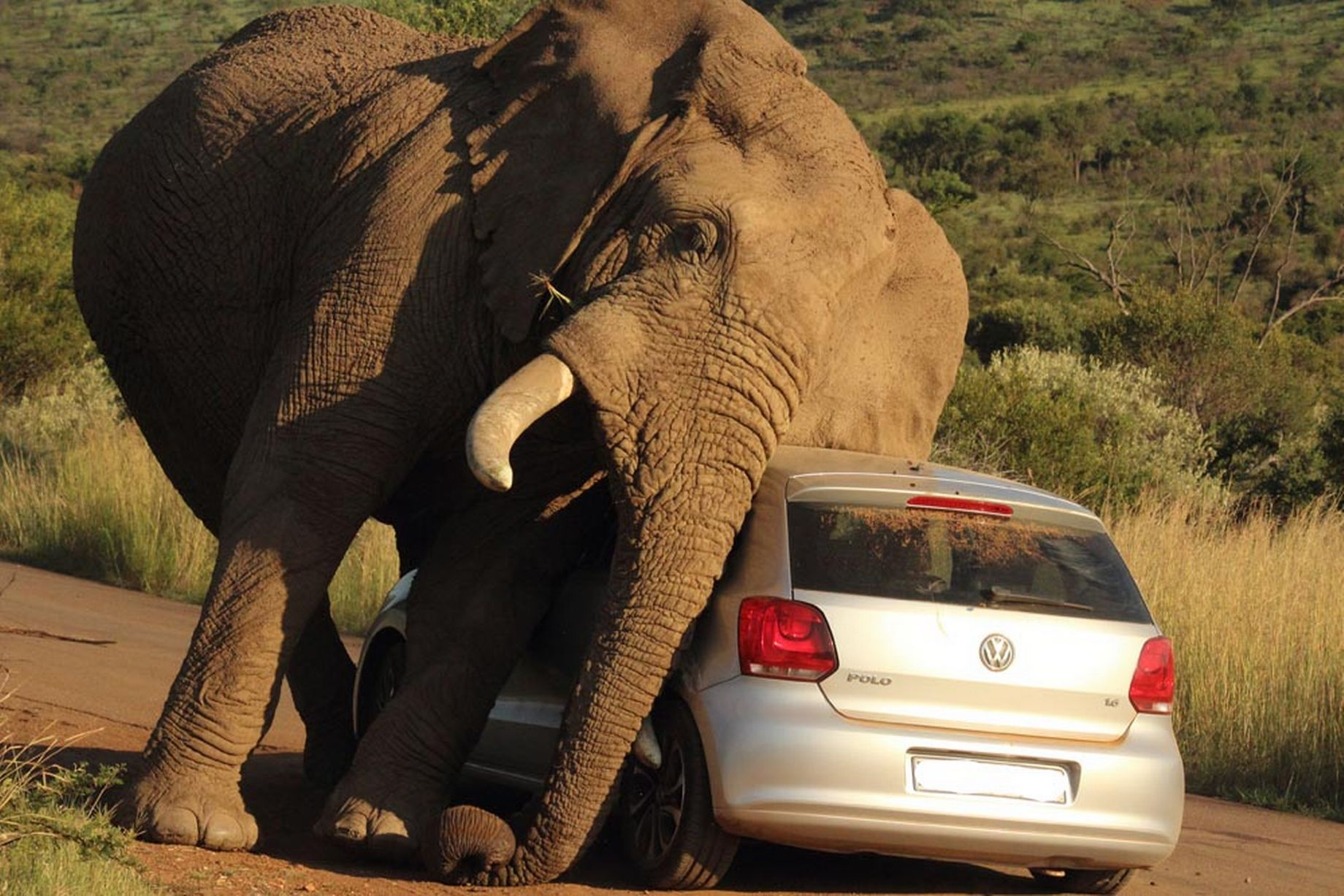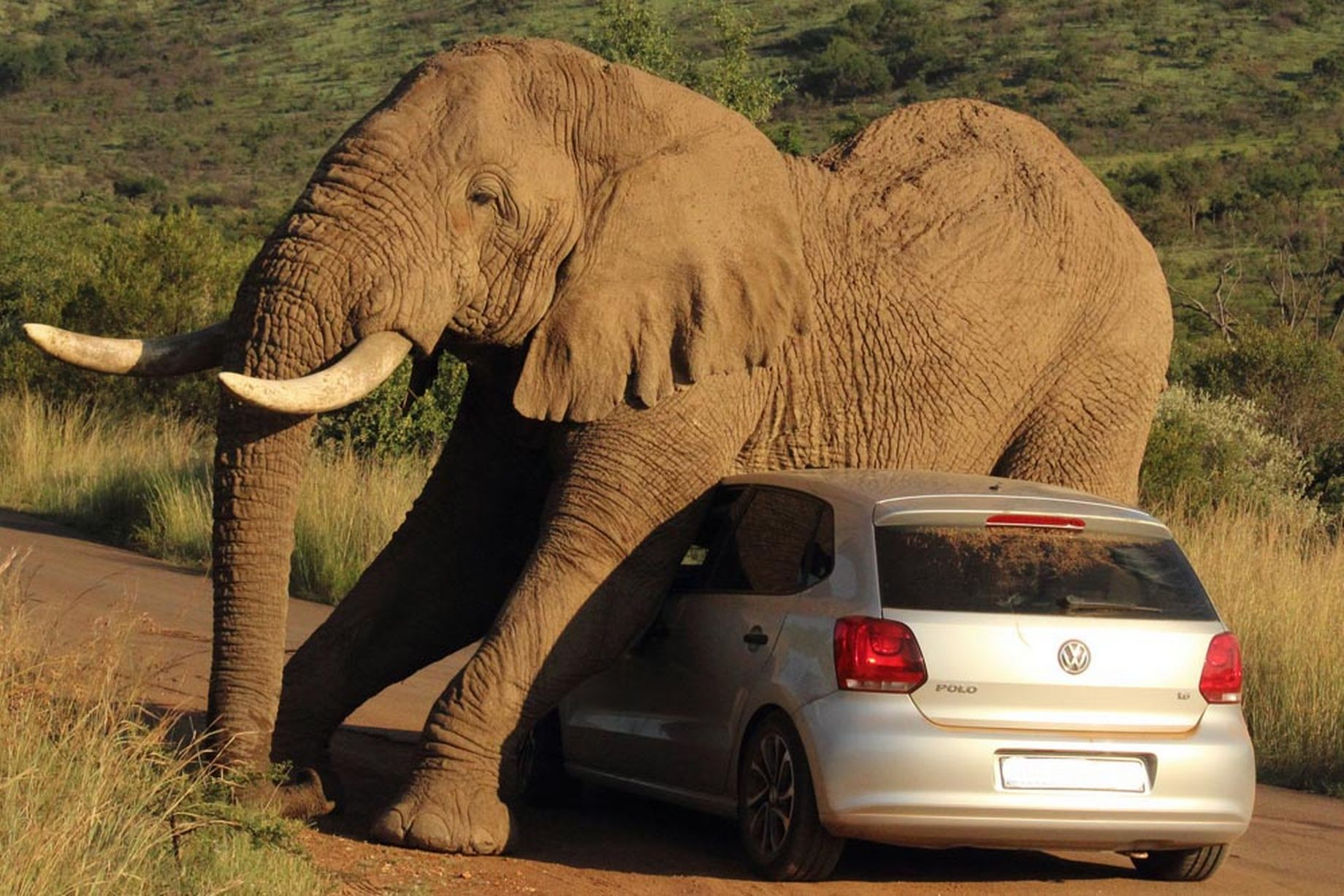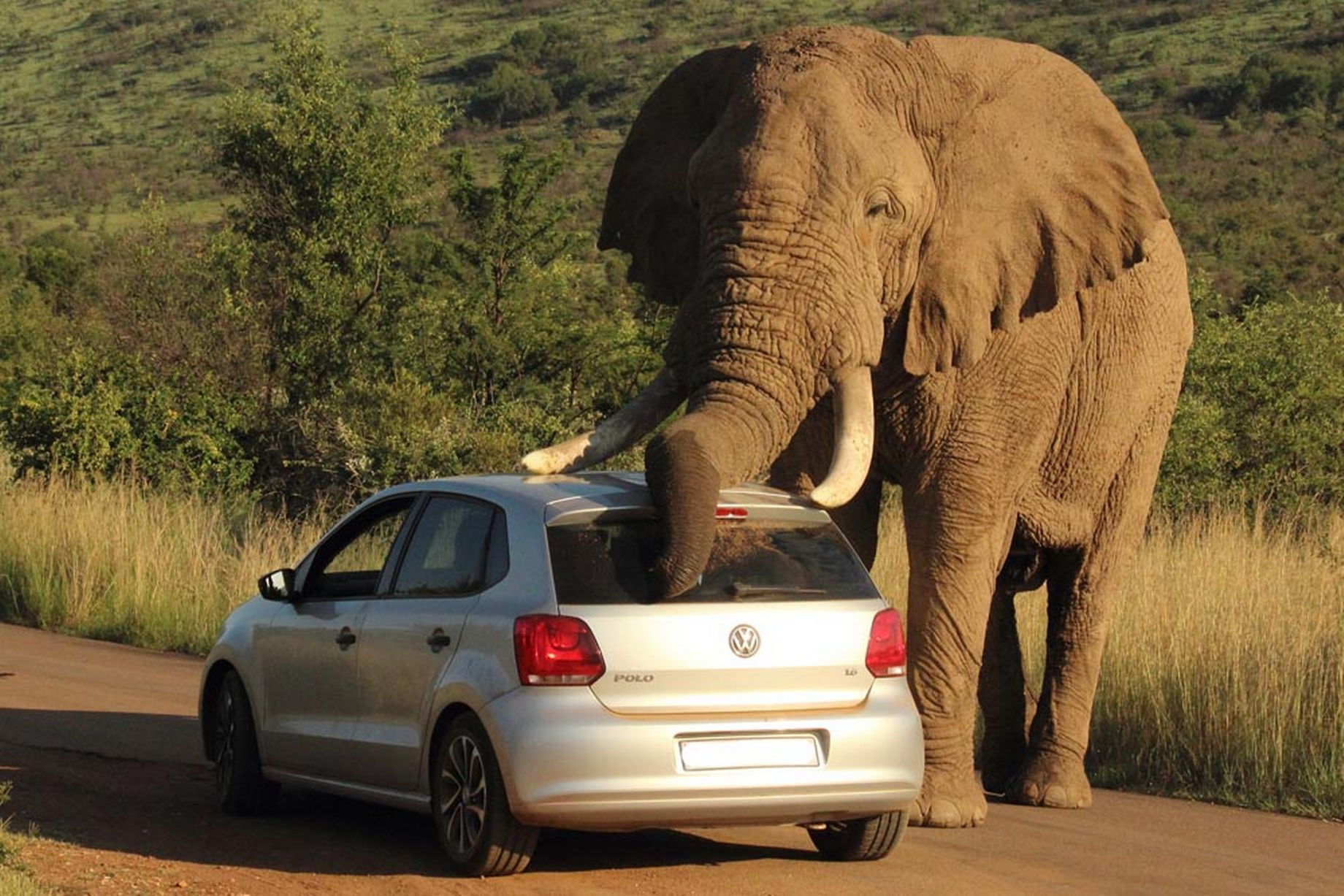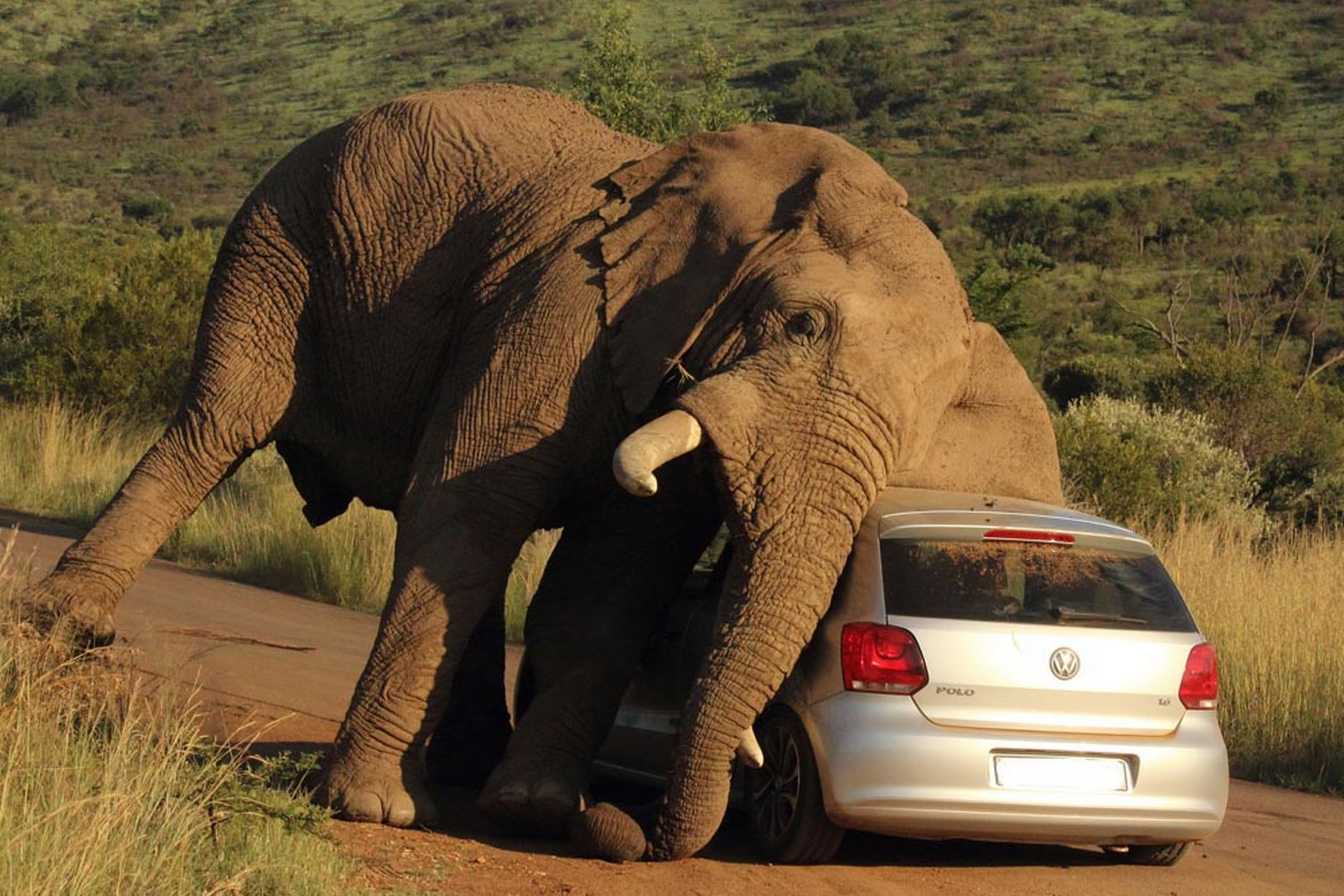In the heart of South Africa’s wilderness, amidst the majestic landscapes and diverse wildlife, tourists often find themselves in awe of the natural beauty that surrounds them. However, sometimes these encounters with nature can become a little more intense than expected, as was the case when an elephant in South Africa’s Kruger National Park showed signs of agitation. Despite the looming threat, tourists remained composed, staying seated in their vehicles as the drama unfolded.

The scene was set against the backdrop of the African savannah, with the sun casting a golden hue over the landscape. Tourists on a safari drive through the park were treated to sightings of various wildlife species, from graceful antelopes to majestic lions. However, their attention was soon captured by the sight of a large elephant bull, his massive frame and imposing tusks a testament to his strength and power.

As the elephant approached the safari vehicles, there was a palpable sense of tension in the air. His ears were flapping, and his trunk was raised—a clear indication of his agitation. Yet, despite the potential danger, the tourists remained remarkably calm, heeding the advice of their experienced guide to stay seated and quiet.
The elephant’s behavior grew increasingly aggressive as he trumpeted loudly and kicked up dust with his powerful feet. However, the tourists remained unfazed, their trust in their guide and their respect for the elephant’s space guiding their actions. They knew that provoking or startling the elephant could escalate the situation further, so they maintained a respectful distance and observed in silence.

After several tense moments, the elephant eventually calmed down and moved away, allowing the tourists to continue their safari drive unharmed. Reflecting on the experience, many of the tourists expressed admiration for the elephant’s majesty and power, as well as gratitude for the opportunity to witness such a rare and raw display of wildlife behavior.
The incident served as a reminder of the importance of responsible wildlife tourism and the need to respect the natural habitats of the animals we encounter. While it may be tempting to seek closer interactions with wildlife, it’s essential to prioritize the safety and well-being of both the animals and the humans involved.

As the safari drive came to an end and the tourists returned to their lodges, they carried with them memories of an unforgettable encounter with one of Africa’s most iconic creatures. And while the elephant’s display of anger may have been intimidating, it was also a poignant reminder of the beauty and complexity of the natural world—a world that continues to captivate and inspire all who venture into its embrace.



